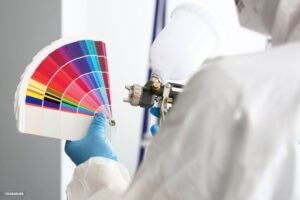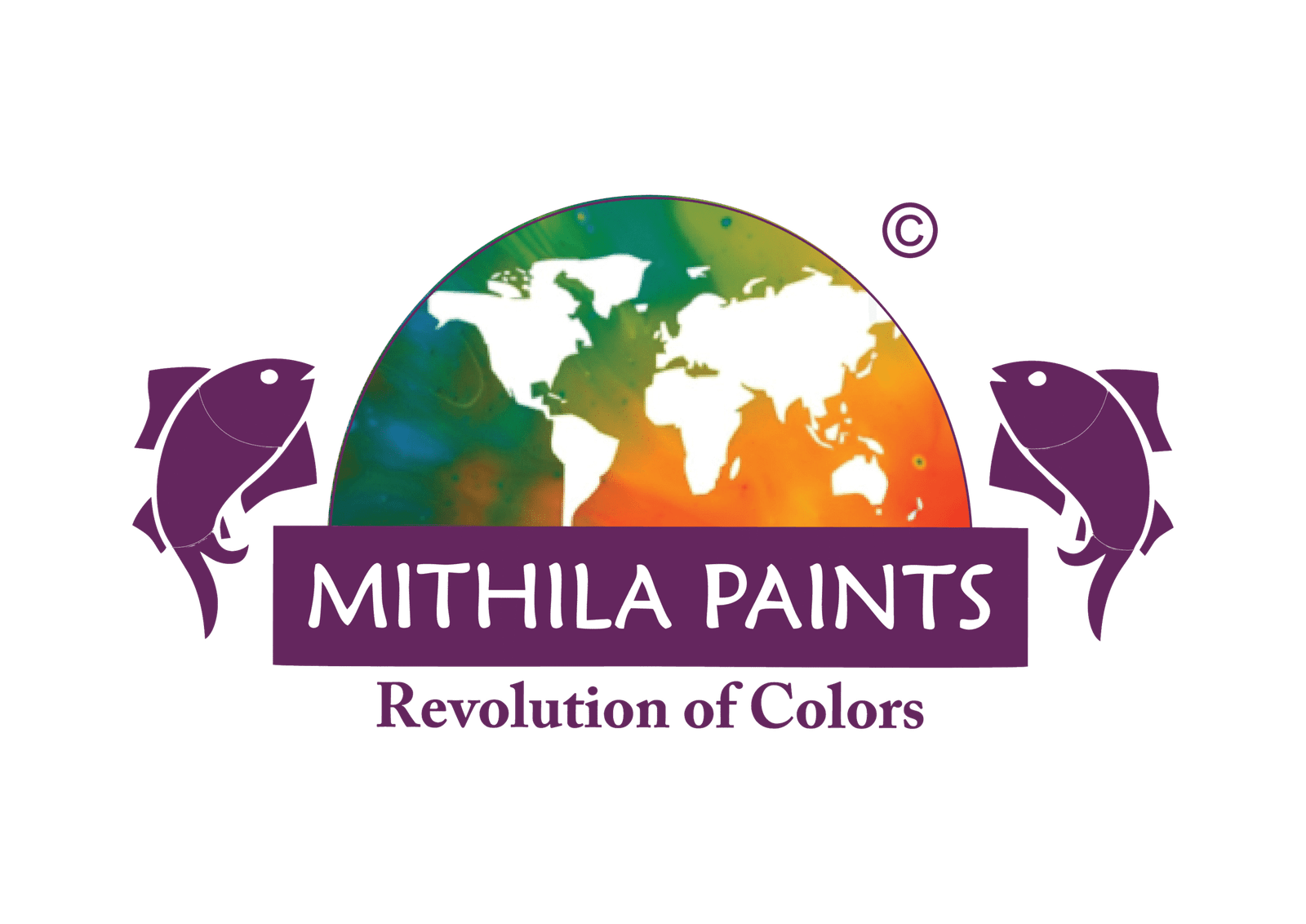Introduction to Paint Sprayers
Mithila Paints has established itself as a renowned name in the paint industry, celebrated for its dedication to quality and innovation. Founded several decades ago, the company has a rich history rooted in the traditional art of painting, particularly inspired by the vibrant cultural heritage of the Mithila region in India. Over the years, Mithila Paints has evolved from its humble beginnings into a modern manufacturing powerhouse, catering to a diverse array of customers looking for premium painting solutions.
The mission of Mithila Paints revolves around delivering high-quality products that not only meet but exceed customer expectations. They strive to create paints that embody durability, vibrant colors, and eco-friendliness. Their commitment to sustainability is evident in their product range, which includes zero-VOC paints and other environmentally conscious options. By prioritizing quality and sustainability, Mithila Paints aims to protect the health of consumers and the environment, while also promoting responsible manufacturing practices.
Mithila Paints offers a variety of products tailored to meet different needs. Their product lineup includes emulsions, enamels, primers, and specialty coatings suitable for various surfaces, all designed to provide excellent coverage and long-lasting results. These offerings reflect the company’s focus on combining traditional craftsmanship with modern technology, resulting in innovative solutions that enhance the overall painting experience. As the company continues to embrace advancements in manufacturing techniques, such as the use of paint sprayers, it is clear that efficiency and innovation remain at the core of its operational philosophy.
Understanding Paint Sprayers
Paint sprayers are versatile tools designed to apply paint, stains, and finishes in a uniform manner, offering various advantages over traditional brush or roller techniques. The primary types of paint sprayers include airless, HVLP (High Volume Low Pressure), and compressed air sprayers. Each type serves specific applications and offers unique benefits, making them integral to modern manufacturing processes, such as those employed at Mithila Paints.
Airless paint sprayers utilize a high-pressure pump to atomize the paint into fine particles, making it ideal for large surfaces. This method allows for faster application and can achieve a smooth, even finish while reducing the need for extensive surface preparation. Moreover, airless sprayers are particularly effective in outdoor applications, where coverage and speed are essential.
HVLP sprayers, on the other hand, are known for their efficiency in paint usage, producing less overspray and providing greater control over the application. This makes HVLP sprayers advantageous for intricate projects where detail matters. They are widely used in the automotive and furniture industries, where precision is crucial. Finally, compressed air sprayers rely on compressed air to atomize the paint. Although they can create a fine finish, they tend to produce more overspray compared to the other types, necessitating skillful handling.
The mechanics of these sprayers involve the use of a nozzle or tip to control the spray pattern and flow rate, ensuring that different surfaces are adequately coated. Paint sprayers are also adaptable, allowing for the use of various paint types and finishes, ranging from latex to oil-based paints. Their applications extend across numerous industries, including automotive, aerospace, construction, and decorative arts, facilitating a shift towards more efficient painting methods.
Incorporating paint sprayers into the production process can significantly enhance operational efficiency, reduce labor costs, and improve overall product quality at Mithila Paints, aligning with the continuous pursuit of excellence in manufacturing practices.

The Role of Paint Sprayers in Manufacturing
At Mithila Paints, the integration of paint sprayers into manufacturing workflows has been a significant advancement towards enhancing productivity and quality. The primary motivation behind utilizing paint sprayers lies in their ability to facilitate a more efficient application of paint compared to traditional methods such as brushes or rollers. By employing advanced sprayers, Mithila Paints is capable of covering larger surface areas more quickly, which significantly reduces the time required for paint application. This efficiency translates into shorter production cycles and an overall increase in the output of finished products.
Beyond mere speed, the use of paint sprayers also contributes to the enhancement of finish quality. Paint sprayers provide a uniform coating that is less prone to inconsistencies that can arise from manual application methods. This uniformity ensures that each product meets high-quality standards, reducing the likelihood of rejects or the need for rework, which can be costly and time-consuming. As a result, customers of Mithila Paints benefit from products that not only meet but often exceed their expectations regarding quality.
Additionally, the precision offered by paint sprayers plays a crucial role in waste reduction. Spraying systems minimize overspray and ensure that paint is applied exactly where needed, thus conserving resources. This capability aligns with Mithila Paints’ commitment to sustainability and efficient resource management, as reducing waste is pivotal in today’s manufacturing landscape. Furthermore, lowering paint consumption directly contributes to cost savings, allowing for more competitive pricing without compromising on quality.
Incorporating paint sprayers into manufacturing processes represents a strategic choice for Mithila Paints. By improving efficiency, enhancing finish quality, and minimizing waste, this modern technique has become an essential element in the company’s operational framework, helping it stand out in the competitive paints and coatings industry.
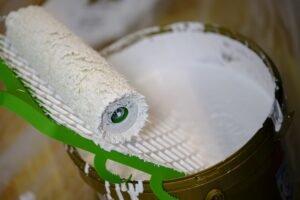
Benefits of Using Paint Sprayers at Mithila Paints
The implementation of paint sprayers at Mithila Paints has brought forth numerous benefits, significantly enhancing manufacturing efficiency. One of the most notable advantages is the substantial time savings associated with the spray application process. Unlike traditional painting methods, which often require extensive preparation and repetitive manual work, paint sprayers deliver a fast and efficient coating solution, allowing for quicker project completion. This reduction in time not only improves workflow efficiency but also enables the company to meet tight deadlines and respond more swiftly to market demands.
Moreover, paint sprayers ensure a consistent application, resulting in a uniform finish across various surfaces. This level of consistency is critical for maintaining the high-quality standards that Mithila Paints strives to achieve. By employing advanced technology within their sprayers, the company can optimize paint dispersion, reduce the risk of drips, and ensure even coverage. This precision in application ultimately contributes to the aesthetic appeal of the finished product, fostering customer satisfaction and reinforcing the brand’s reputation for excellence.
Another significant benefit of paint sprayers is their ability to reach intricate designs and hard-to-access areas, which might pose challenges for traditional painting techniques. With the versatile nature of paint sprayers, Mithila Paints can effectively manage complex projects without compromising quality. This capability not only broadens the scope of designs that can be executed but also exemplifies the company’s commitment to innovative solutions that cater to diverse customer needs.
Additionally, the use of paint sprayers aligns with Mithila Paints’ commitments to sustainability. By optimizing paint use and minimizing overspray, the company can reduce waste and lower the environmental impact of its manufacturing processes. In summary, the integration of paint sprayers within Mithila Paints not only enhances operational efficiency but also reinforces their dedication to quality and sustainable practices.
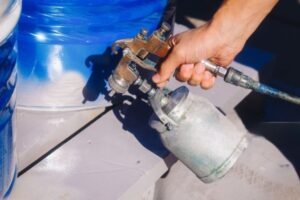
Quality Control Measures in the Painting Process
Quality control is a critical component of the manufacturing process, especially in the painting sector where the application of paints can significantly impact the overall aesthetic and functionality of a product. At Mithila Paints, stringent quality control protocols are meticulously followed alongside the deployment of advanced paint sprayers, ensuring that every product meets the highest industry standards.
One of the primary measures involves monitoring the paint application process. This entails regular assessments of the paint sprayers’ settings, including spray patterns, pressure, and distance from the surface. By adhering to predefined specifications, Mithila Paints minimizes the risk of overspray or uneven distribution. Technicians are trained to adjust these parameters, thereby optimizing the efficiency of the paint application and ensuring that each layer is delivered consistently, which is vital for achieving the desired finish.
Furthermore, to ensure color accuracy, Mithila Paints utilizes sophisticated color matching technology that adheres to professional standards. This involves systematic checks against reference samples to confirm that the correct hues are applied. By conducting periodic evaluations throughout the painting process, any discrepancies can be swiftly rectified, thus maintaining the integrity of the final product. The integration of paint sprayers in this stage also allows for more precise control over color application, contributing to an even more refined result.
Lastly, maintaining surface integrity is paramount and is achieved through a thorough inspection regime. After painting, surfaces are examined for defects such as runs, sags, or bubbles. Any identified issues are promptly addressed, allowing for touch-ups or refinishing as required. These quality control measures collectively not only enhance the operational efficiency at Mithila Paints but also ensure that the end products meet or exceed consumer expectations, reinforcing the company’s reputation in the manufacturing sector.
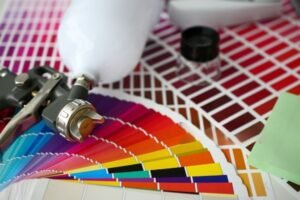
Training and Safety Protocols for Efficient Use
At Mithila Paints, the commitment to safety and operational excellence begins with comprehensive training programs tailored for employees utilizing paint sprayers. Understanding the sophisticated nature of paint sprayers and their application processes is essential to ensuring not only efficiency in manufacturing but also the well-being of all personnel involved. The training regimen integrates theoretical knowledge and practical skills, equipping employees with the necessary competencies to effectively manage paint sprayers while adhering to industry standards.
The training modules focus on the fundamentals of various aerosol applications, introducing employees to the different types of paint sprayers available and their specific use cases. Participants engage in hands-on practice, learning about setup, operation, maintenance, and troubleshooting of spray equipment. This immersive approach enables them to develop a thorough understanding of how to maximize the efficiency of paint sprayers, thus ensuring a high-quality finish in their projects.
Another critical aspect of the training program is the emphasis on safety protocols. Employees are trained in personal protective equipment (PPE) usage, including masks, gloves, and goggles, which are vital to minimizing exposure to potentially harmful substances. Regular safety drills and workshops further reinforce these practices, highlighting the importance of safety in the workplace and promoting a culture of accountability among employees.
Additionally, Mithila Paints continually updates its training programs in line with advancements in technology and industry best practices. This ensures that employees remain informed about the latest innovations and safety measures, ultimately enhancing the efficient use of paint sprayers. By fostering an environment focused on education and safety, Mithila Paints not only boosts productivity but also cultivates a workforce that is skilled, knowledgeable, and inherently aware of the significance of safety in manufacturing processes.
Case Studies: Successful Applications of Paint Sprayers
One of the most compelling case studies showcasing the effective application of paint sprayers in enhancing manufacturing efficiency at Mithila Paints involves a large-scale project for a renowned furniture manufacturer. The client faced challenges with consistency and speed while applying paint to various wood products. Traditional painting methods resulted in uneven coverage and longer drying times, leading to production delays. Mithila Paints introduced advanced paint sprayers into the workflow, which streamlined the application process. With the paint sprayers, the manufacturer achieved a uniform finish on all products while significantly reducing drying time by 50%. As a result, overall production efficiency improved by 30%, showcasing the transformative impact of this technology.
Another notable example comes from a partnership with a construction firm that required a quick turnaround on exterior wall painting for a series of commercial buildings. The project timeline was compressed, necessitating a fast and efficient solution. Mithila Paints utilized airless paint sprayers, which enabled the team to cover large surface areas in a fraction of the time compared to traditional brushes and rollers. This method not only expedited the application process but also reduced labor costs by approximately 25%. The end result was a high-quality finish that met the client’s deadline without sacrificing quality, demonstrating the efficiency and versatility of paint sprayers in various applications.
Lastly, a case involving the automotive industry illustrated the progressive advantages of using paint sprayers. Mithila Paints provided a custom formulation for paint sprayers used on several vehicle models. The project required exceptional precision and quality control, which were achieved through the use of automated paint sprayer systems. This innovation reduced material waste by 40% and ensured a consistent application across all vehicles. The seamless integration of paint sprayers into this process highlighted their role not only in meeting strict industry standards but also in enhancing productivity and environmental sustainability within manufacturing.
Challenges and Solutions in Implementing Paint Sprayers
Integrating paint sprayers into the manufacturing process at Mithila Paints presented several challenges that required thoughtful consideration and strategic solutions. One significant challenge was the initial resistance from the workforce, who were accustomed to traditional painting methods. This apprehension stemmed from concerns about the learning curve associated with operating new technology and the potential for job displacement. To address this, Mithila Paints implemented comprehensive training programs. These programs not only educated employees on the operation of paint sprayers but also highlighted the benefits of adopting such technologies, including enhanced precision and reduced material waste.
Another challenge faced was the calibration and maintenance of paint sprayers. Inconsistent application and variations in finish quality were initial hurdles due to the different nature of the materials used compared to manual methods. To overcome this, a dedicated maintenance schedule was established, which included regular checks and calibrations of the equipment to ensure optimal performance. Mithila Paints also partnered with suppliers to provide specialized training on the specific requirements of their paint sprayers, thus ensuring that the equipment was continuously operated at peak efficiency.
Furthermore, integrating paint sprayers involved adapting the existing manufacturing layout to accommodate the new machinery. This transition required a careful analysis of workflows to minimize disruptions and maximize productivity. Mithila Paints utilized a phased approach when implementing the redesign, allowing for gradual adjustments and minimizing downtime. The feedback from this transition was gathered through employee surveys, fostering a collaborative environment that enabled continuous improvements.
Overall, while challenges arose during the integration of paint sprayers, Mithila Paints successfully addressed these issues through training, ongoing maintenance, and thoughtful redesign of their manufacturing processes. By embracing these modern technologies, the company was able to enhance its operational efficiency significantly.
The Future of Paint Manufacturing with Sprayers
The landscape of paint manufacturing is on the brink of a significant transformation, driven by advancements in technology, particularly in the realm of paint sprayers. Companies like Mithila Paints are at the forefront of this evolution, harnessing cutting-edge sprayer technology to enhance efficiency, reduce waste, and improve product quality. These innovations come as industries increasingly demand sustainable solutions that minimize environmental footprints while maximizing operational effectiveness.
One major trend shaping the future of paint manufacturing is the integration of smart technology within paint sprayers. Advanced features such as automated systems that monitor and adjust spray patterns in real-time offer manufacturers unprecedented control over application processes. This precision not only reduces overspray and waste but also ensures a more uniform finish, contributing to the overall quality of painted surfaces. By adopting such technologies, Mithila Paints exemplifies its commitment to staying ahead in a competitive market.
Moreover, the emphasis on sustainability is expected to significantly influence future developments in this industry. As manufacturers seek to lower their carbon emissions, paint sprayers designed to utilize low-VOC (volatile organic compounds) products or water-based alternatives are becoming central to the production methods. This shift not only complies with stringent environmental regulations but also resonates with eco-conscious consumers, thus enhancing brand loyalty and market reach. Mithila Paints’ dedication to sustainable practices will undoubtedly play a role in shaping its future trajectory.
In conclusion, the future of paint manufacturing with sprayers appears bright, offering numerous opportunities for companies to innovate and enhance their production processes. By remaining committed to technological advancements and sustainable practices, firms like Mithila Paints will not only lead the charge in efficiency but also set new standards for responsible manufacturing within the industry.
